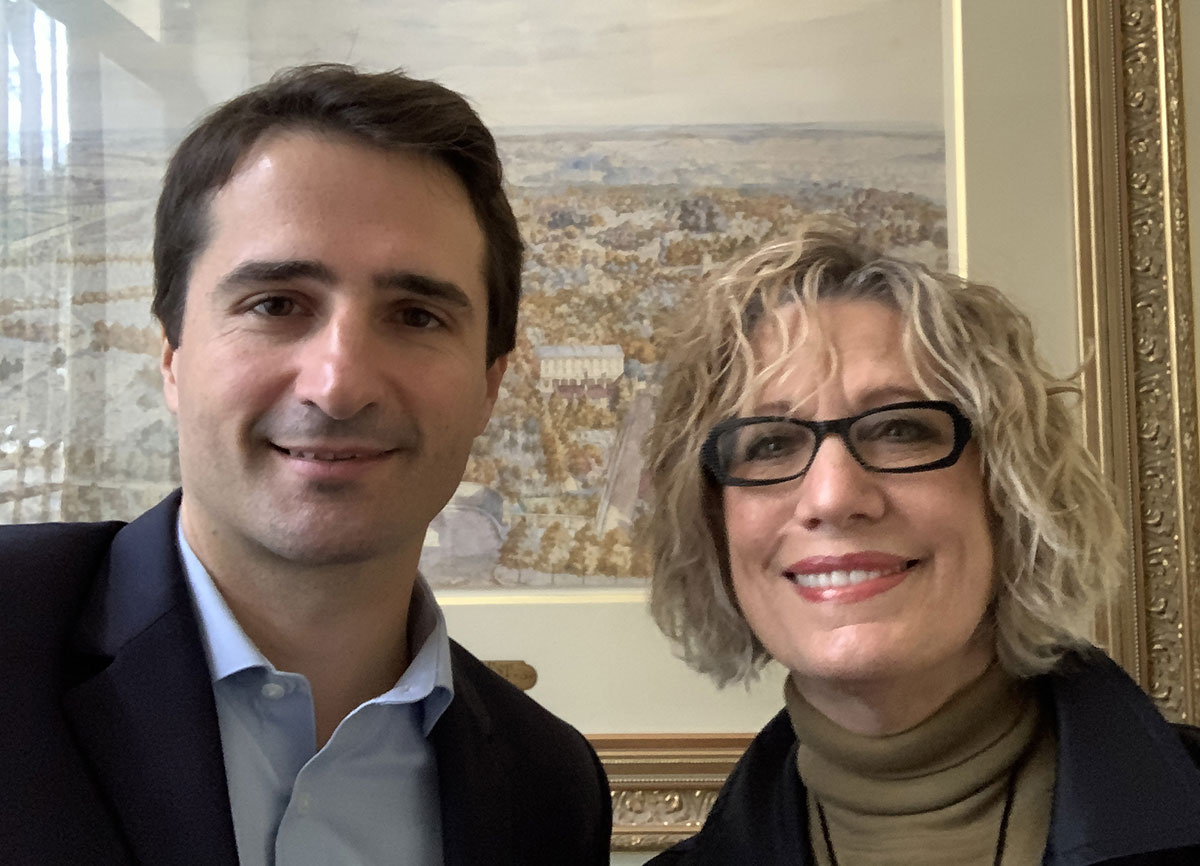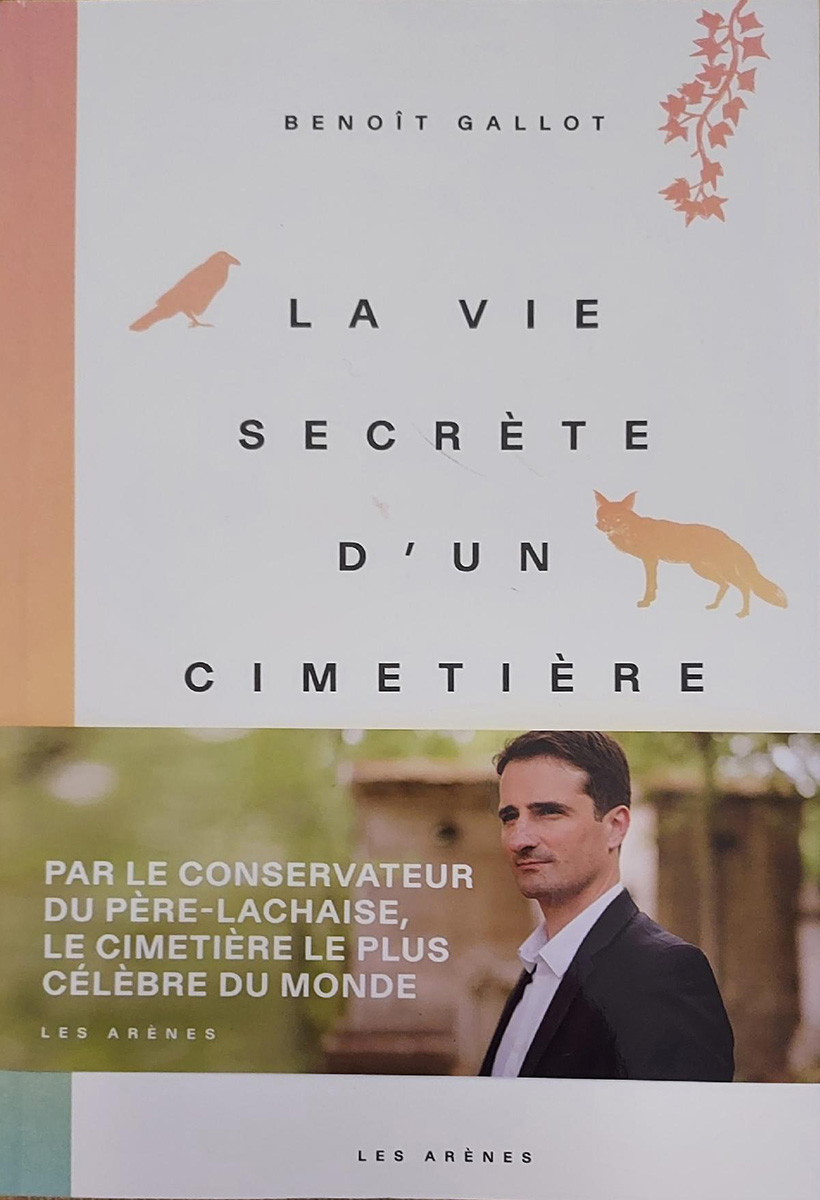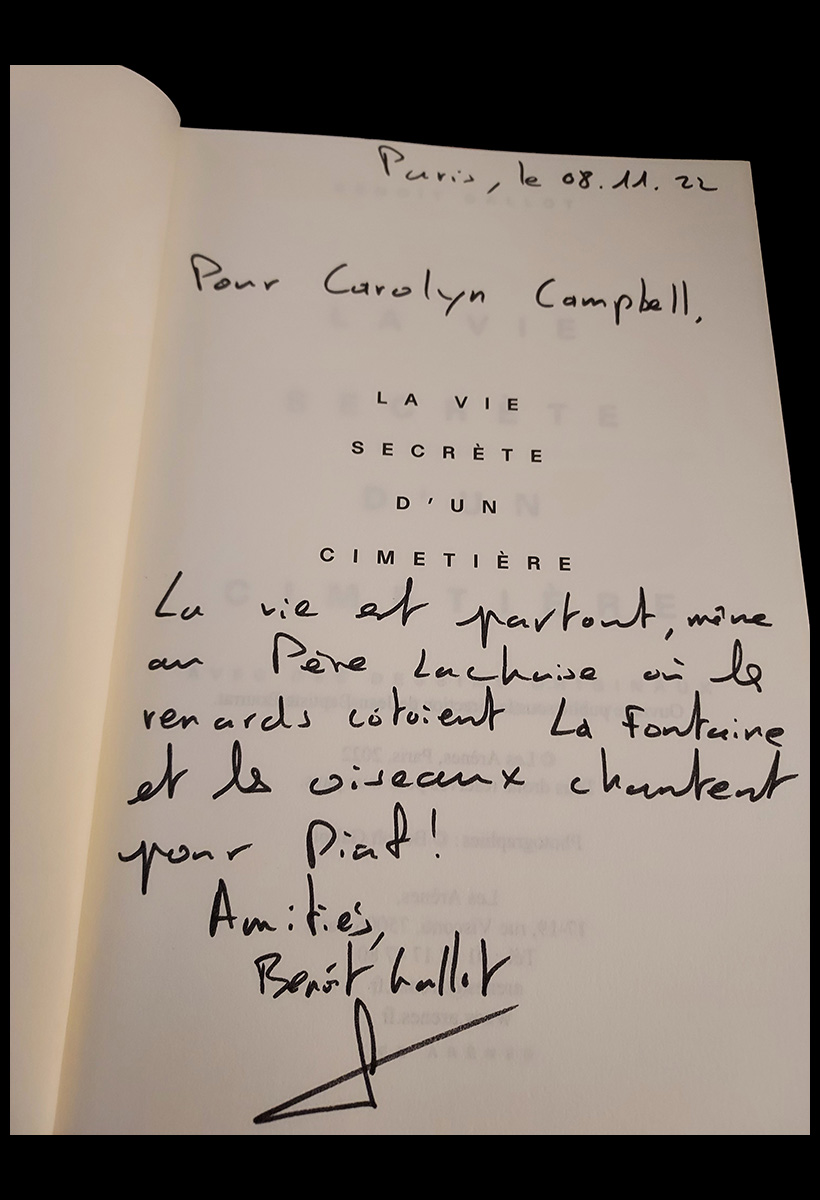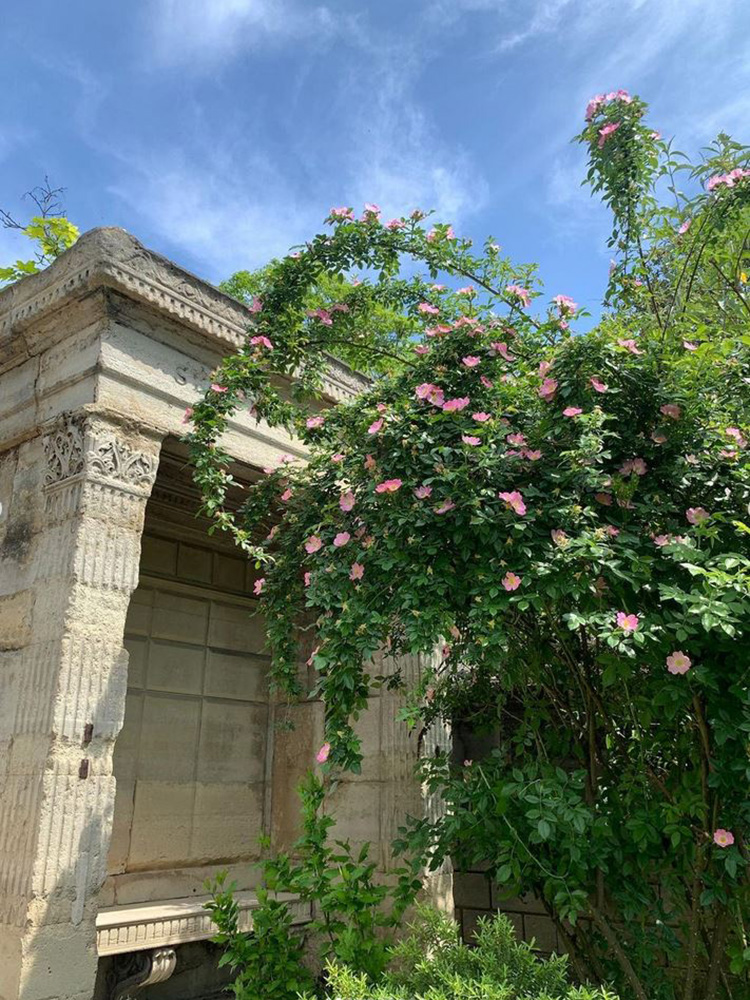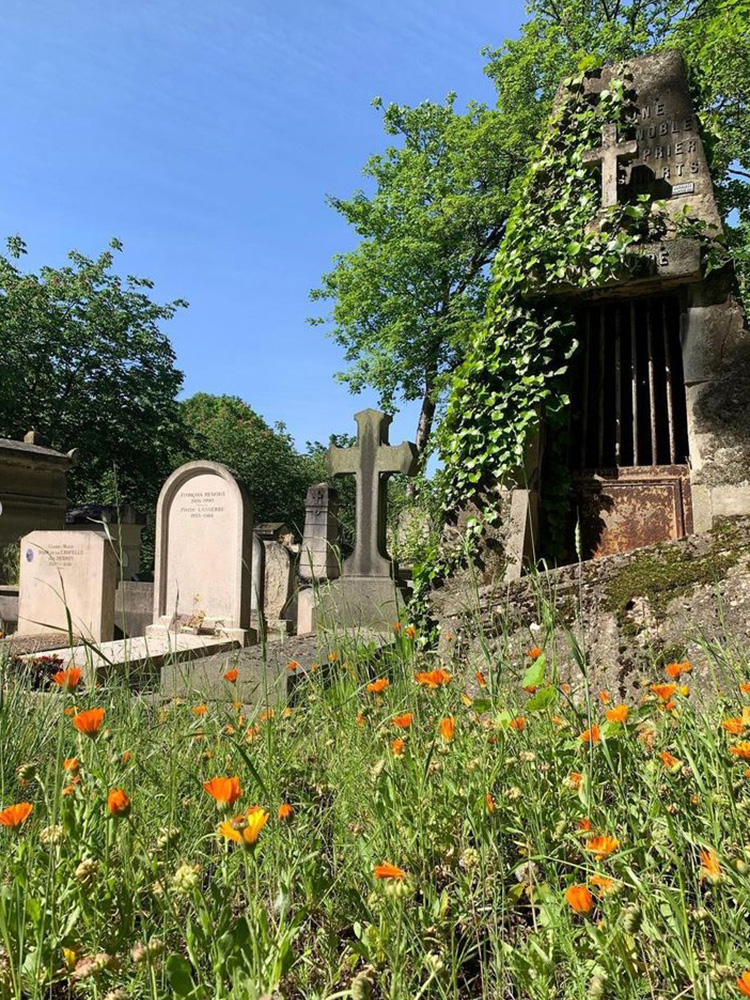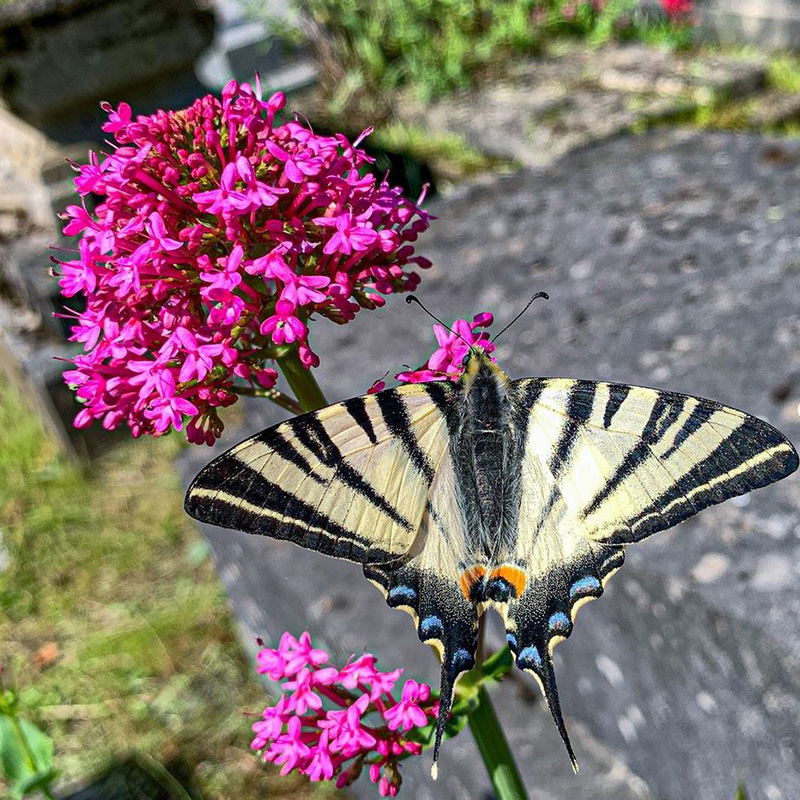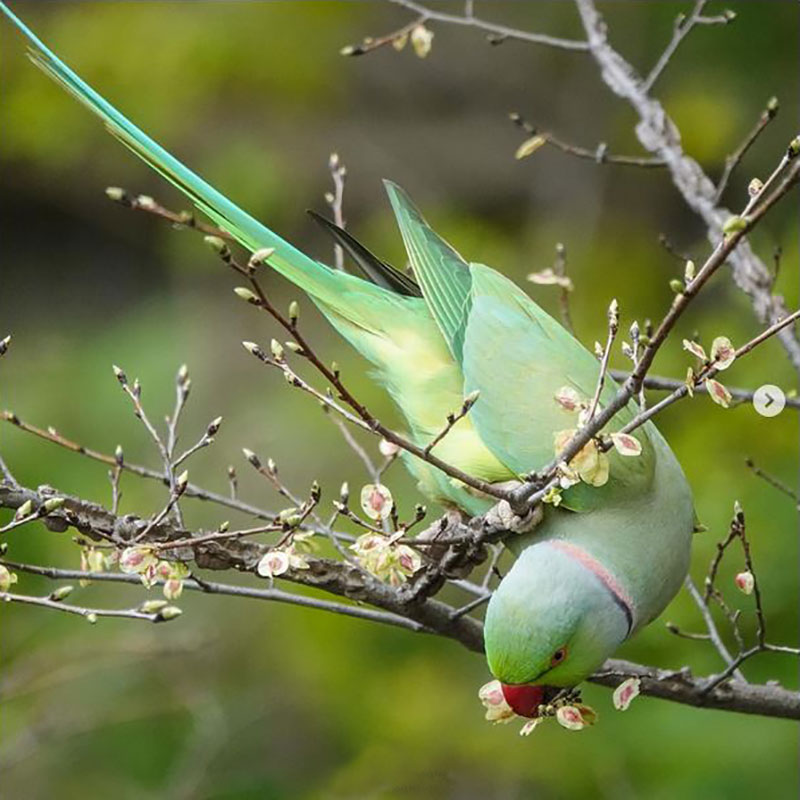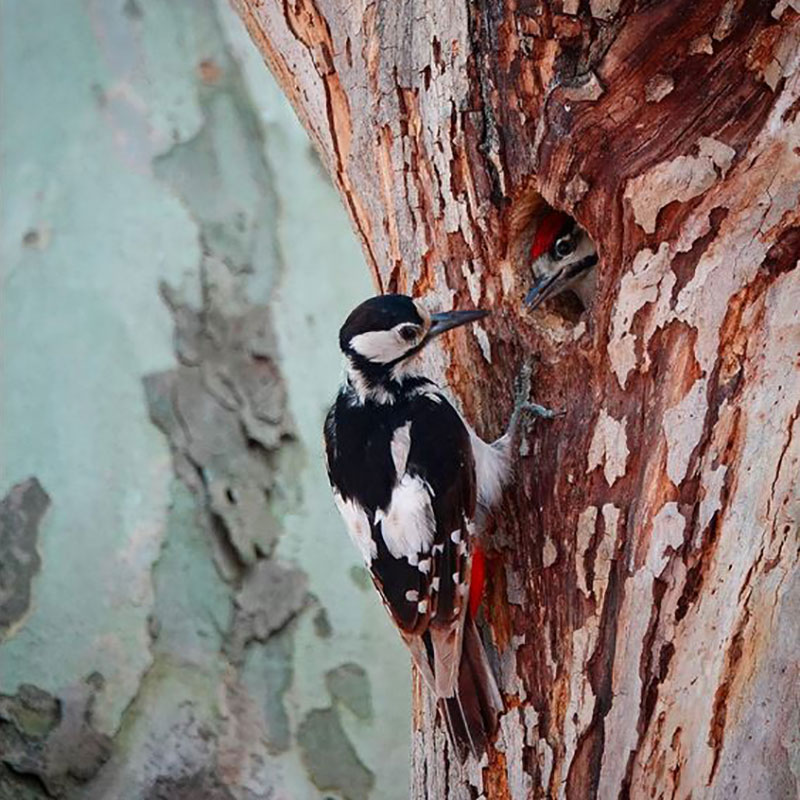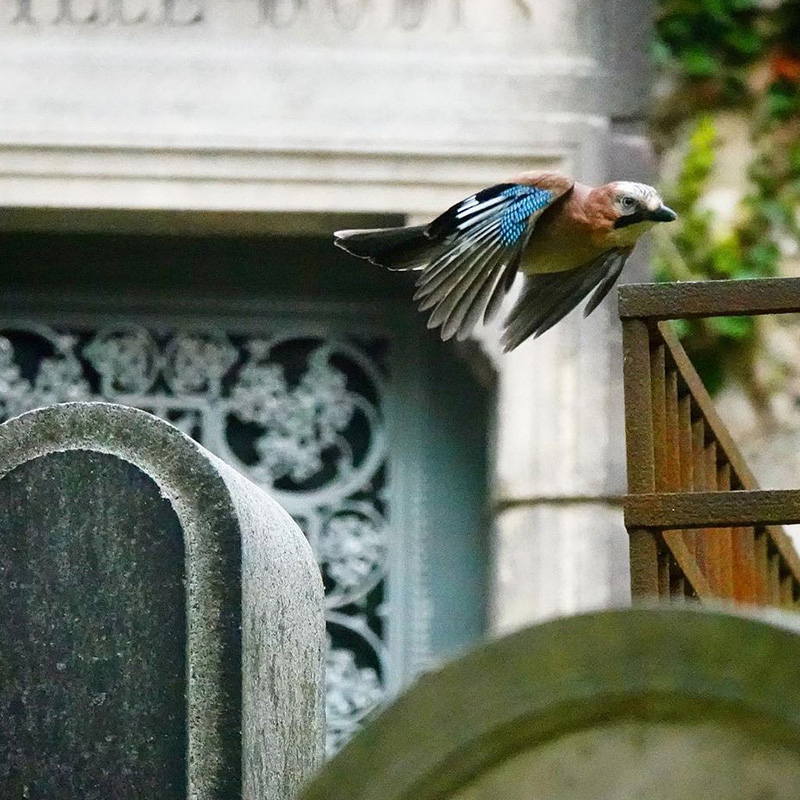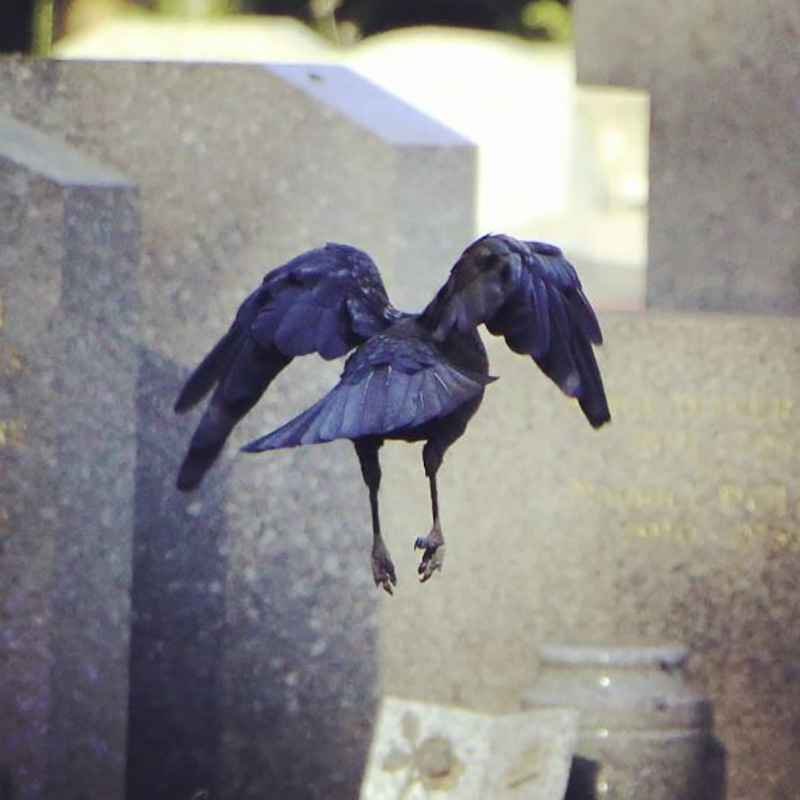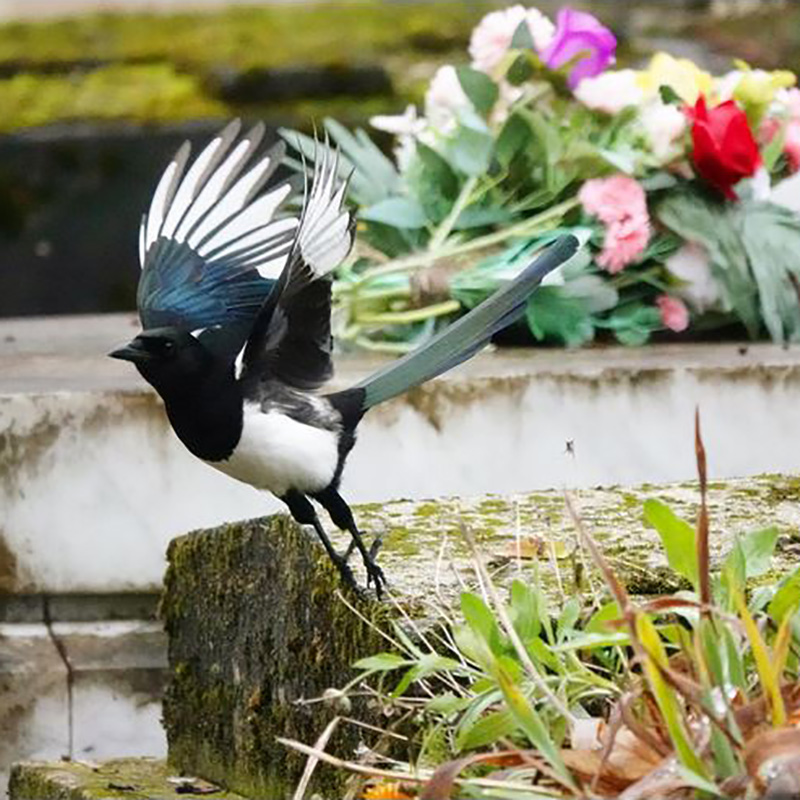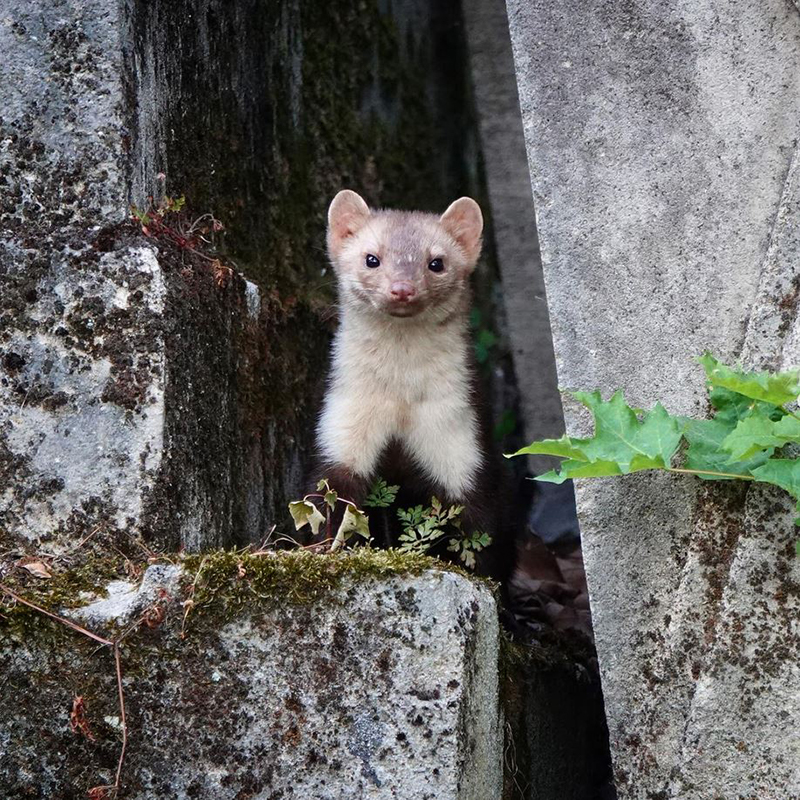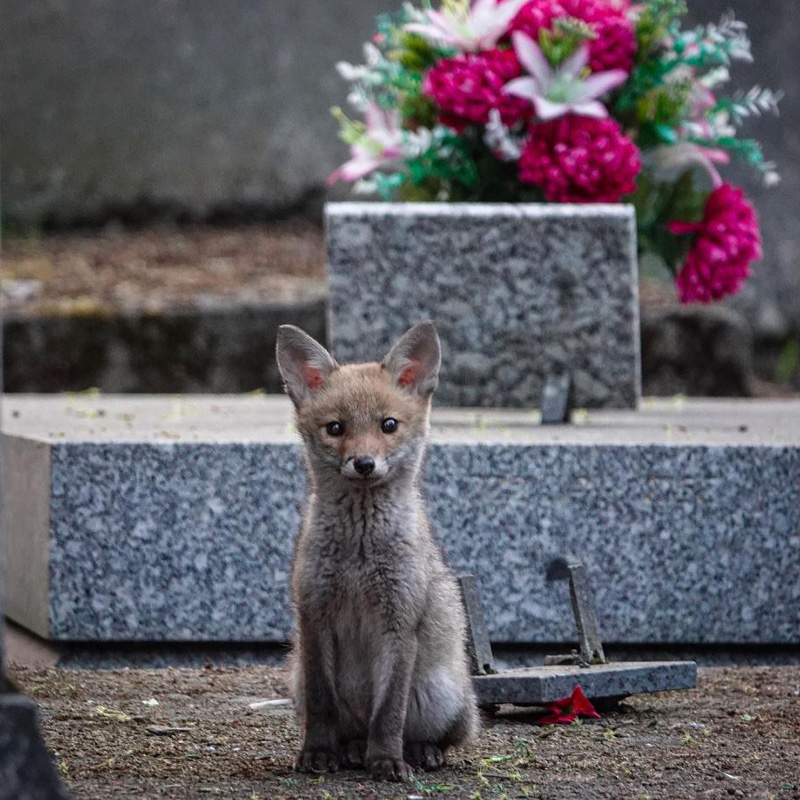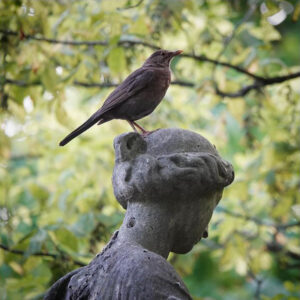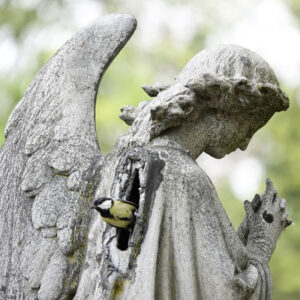While in Paris last fall, I was strolling through the cemetery when I serendipitously crossed paths with Benoît Gallot, Conservator of Père-Lachaise. He is in charge of shepherding the spirits of both the living and the dead at Père-Lachaise, and lives with his wife and four children in an apartment on the grounds.
Coincidentally, I had just purchased his debut book, La vie secrète d’un cimetière (The Secret Life of a Cemetery) the night before. I stopped and introduced myself, as well as mentioning a mutual friend, Marie Beleyme, a noted historian of the cemetery who consulted on both our books. Published by Les Arènes, Gallot’s book is in French, sold on Amazon, and can be found in bookstores throughout Paris. An English translation will be published by Greystone Books in Canada, the United States and England in spring, 2025.
Benoît said he knew my name and my book City of Immortals (mark me surprised and humbled), plus he had seen me on TV the day before. It had been All Saints’ Day (la Toussaint), and I was visiting the tomb of Héloïse and Abelard when a crew from French TV Ch 3 asked if they could interview me.
I told Benoît how much I admired his focus on nature and the wildlife in the cemetery. He has a fascinating Instagram account filled with exceptional images (@la_vie_au_cimetiere).
We met the next morning in his office (selfie of us above taken by Benoît) to autograph each other’s books. The inscription from Benoît reads, “Life is everywhere even at Père-Lachaise, where the fox rubs shoulders with La Fontaine and the birds sing for Piaf.”
We vowed to stay in touch, and months later he agreed to an email interview, which I have published here along with a selection of his photographs. In bold text, I have also added a few excerpts from his book* to expand on our conversation. Enjoy!
Interview
Carolyn Campbell (CC): What was the personal event or turning point when you decided to switch from a career in law to the cemetery profession? How did you prepare for that change?
Benoît Gallot (BG): It was working in a company that I found less stimulating that pushed me to apply for civil service positions and do more interesting work. I didn’t need any real preparation. I learned on the job; however, growing up in a family of funeral marble workers helped me a lot.
CC: What are the emotional demands of working with bereaved families?
BG: Prior to my position at Père-Lachaise, I worked at the Concessions Office at the Parisian cemetery of Ivry. The relationship with families was similar. It is important to me to be able to help families in this difficult moment. This is the work I prefer. Observing how my parents always had a desire to better meet the expectations of their clients helped me understand how to welcome people in my office who are struck by bereavement.
CC: How have members of your family adjusted to living in an apartment above the administrative offices of the cemetery?
BG: We think we are lucky to live in a….graveyard! My wife and my children took advantage of it during the Covid confinement when all of Paris was closed.
CC: Does it ever seem depressing always being around the dead?
BG: What has struck me since I have been managing a cemetery: it is very much alive! Cemeteries are not only made to bury the dead but also to allow loved ones to grieve. They are also places where the dead continue to live thanks to the tombs that pay homage to them and prevent them from falling into oblivion, absolute nothingness.
I also discovered that Parisian cemeteries are home to absolutely incredible flora and fauna. I would never have thought of observing foxes in the heart of Paris, but it is now possible due to the great biodiversity of Père-Lachaise Cemetery. Sometimes, I have the impression of being in the countryside in the heart of Paris.
*Book Excerpt
Even though many people call us “the Addams family,” neither our jobs nor the fact that we live in a cemetery have made us sad, let alone depressed. Unlike our apathetic neighbors, we are, on the contrary, determined to enjoy life to the fullest. Since we have been living among the dead, in addition to a marriage and multiple trips, we have also contributed to the repopulation of France with three children born between 2011 and 2019, and who have therefore never lived anywhere other than in a cemetery. There they took their first steps and learned to ride bikes in paths lined with tombs. Like me, my four children are growing up in a universe where death is omnipresent.
An Instagram Account and Life in the Cemetery
I got back into the game of the social network and, as a good disciple, respected its codes, which made me gain many subscribers. I am now an expert in Instagramism and, inspired by the epitaph which appears on the very visited mausoleum of Allan Kardec, founder of the spiritualist philosophy—“To be born, to die, to be reborn again and to progress unceasingly, such is the Law”—I have made the following motto my own:
LIKE, COMMENT, LIKE AGAIN
AND POST CONSTANTLY,
THIS IS THE LAW.
CC: Please tell me about your evolution as a photographer. What cameras have you used?
BG: Again, I learned on the job, especially during my honeymoon in 2015! It was then that I learned to photograph the fauna and flora in the Parisian cemetery of Ivry thanks to a Canon reflex.
CC: I have seen a recent photo of you with a Sony camera. Is that your preference now?
BG: It wasn’t my favorite brand but the RX-10 won out because of its unbeatable value for the money. I wanted a 600mm lens and this Sony was perfect for my budget. It’s very fast and quite easy to use.
 CC: Having photographed mostly in the daytime and at dusk when I had access during regular cemetery hours, in your experience, when is the best time for shooting the natural world of Père-Lachaise?
CC: Having photographed mostly in the daytime and at dusk when I had access during regular cemetery hours, in your experience, when is the best time for shooting the natural world of Père-Lachaise?
BG: For the birds, it’s all day but for foxes and weasels, it’s evening, and nightfall.
Taking shots of foxes is not an easy hobby, however. After their media coverage, many visitors came to ask for the location of the burrow, thinking that they too could take pictures of the red canines, or even take selfies with them, as if Père-Lachaise had become a zoo. However, it is impossible to come across foxes in the middle of the day, for a simple reason: they sleep in their burrow. So I use my privilege of staying there to observe and photograph them after the cemetery closes, when they begin their day, or rather their night. The majority of my shots were taken between 8:45 p.m. and 9:15 p.m., at dusk.
The most favorable period to hope to see the foxes is generally between mid-April and the end of May when, about a month old, they make their first trips outside their shelter. Left to their own devices while the parents go hunting, they play around the den while waiting for their return. During this time, their curiosity is stronger than their distrust. They walk on the graves, hide inside them, chew the low branches of the shrubs, smell the air, stretch, yawn, lie down, raise their heads at the slightest unusual noise, start running unexpectedly….
CC: The founding of Père-Lachaise in 1804 marked a revolution in memorial park design. Today, what distinguishes it from others that were modeled after it?
BG: The strong intertwining of its tree heritage and leading funerary heritage is still its trademark today. Hundred-year-old trees, dense vegetation and grandiose graves that intertwine in a labyrinthine place, all with a very high concentration of personalities who have marked history for two centuries. I think this makes Père-Lachaise a timeless place when you can stroll, meditate, cultivate your secret garden. You don’t feel the harshness of the outside world. We think about it and reflect differently than in town but nothing morbid. Père-Lachaise is above all a very soothing place.
An Open-air Museum
The heritage of Père-Lachaise, a true showcase of art, is itself preserved thanks to two levels of Heritage class. Thirteen monuments benefit from the highest level of protection by being classified as historical monuments: the Communards’ wall, the hemicycle at the main entrance, the eastern chapel, the war memorial of sculptor Albert Bartholomé, and nine graves, including those of Oscar Wilde, Molière, Jean de La Fontaine, Heloïsé and Abelard, and Frédéric Chopin.
The Heritage includes the crematorium and columbarium by architect Jean Camille Formigé, which has been listed as an historical monument since 1998. All funerary monuments prior to 1900 and located in divisions 1 to 58, 65 to 71, and 91 are also registered, that is to say, about 30,000 burials. Families who hold them may not carry out work there without the prior agreement of the Regional Conservation of Historic Monuments.
CC: We both agree that our favorite work of art in the cemetery is La Douleur (grief) on the Guérinot tomb in Division 55 by sculptor Louis-Ernest Barrias. It’s the image that appears on my book cover. Sadly, it has been stained horribly by air pollution. Is there any way it could be restored like the tomb of filmmaker Georges Méliès?
BG: Impossible, because it is a private burial plot on which the administration has no rights. The tomb of Méliès has been restored by the descendants of the filmmaker. The heirs of the Guérinot burial site should do the same.
CC: If a visitor had only an hour to spend in Père-Lachaise to get a sense of its beauty and historical significance, what areas you would recommend they see?
BG: You must go to the eastern chapel (near Division 55) to admire all of Paris, then go down the Avenue de la Chapelle towards the Casimir Perier roundabout, take the tiny Chemin des Chèveres, and get lost in divisions 28 and 29, where rest the marshals who fought alongside Napoleon. There reigns absolute calm, an atmosphere of undergrowth, a unique sensation—a change of scenery guaranteed!
CC: Thank you, Benoît. I look forward to our meeting again in Paris.
When I was transcribing our conversation, I was stunned to realize that the exact place where Benoît suggests visitors get lost is the same location where I had a surreal experience described in my story for Lion’s Roar (see Oct. 3, 2023 article on the Press page). Père-Lachaise definitely delivers an otherworldly experience.
